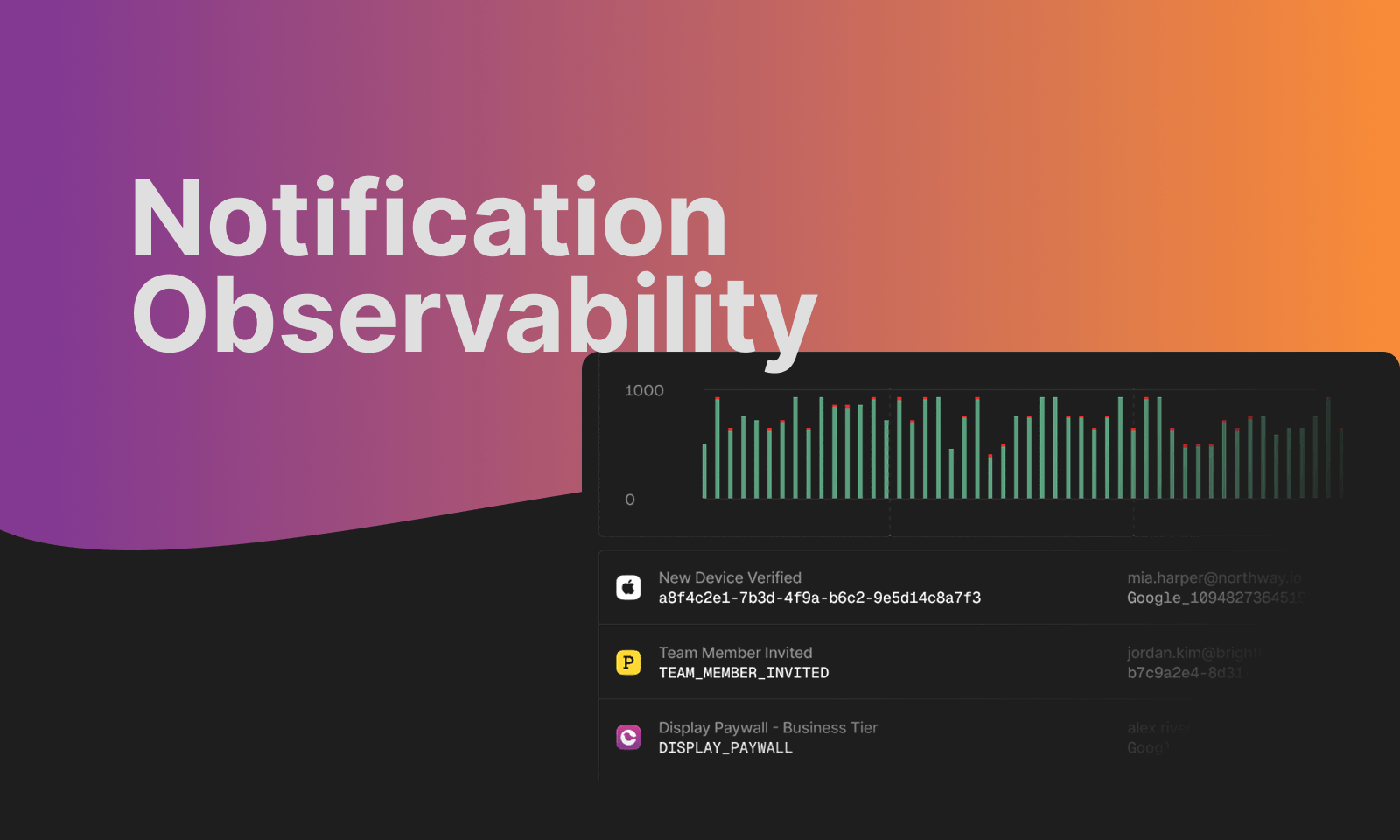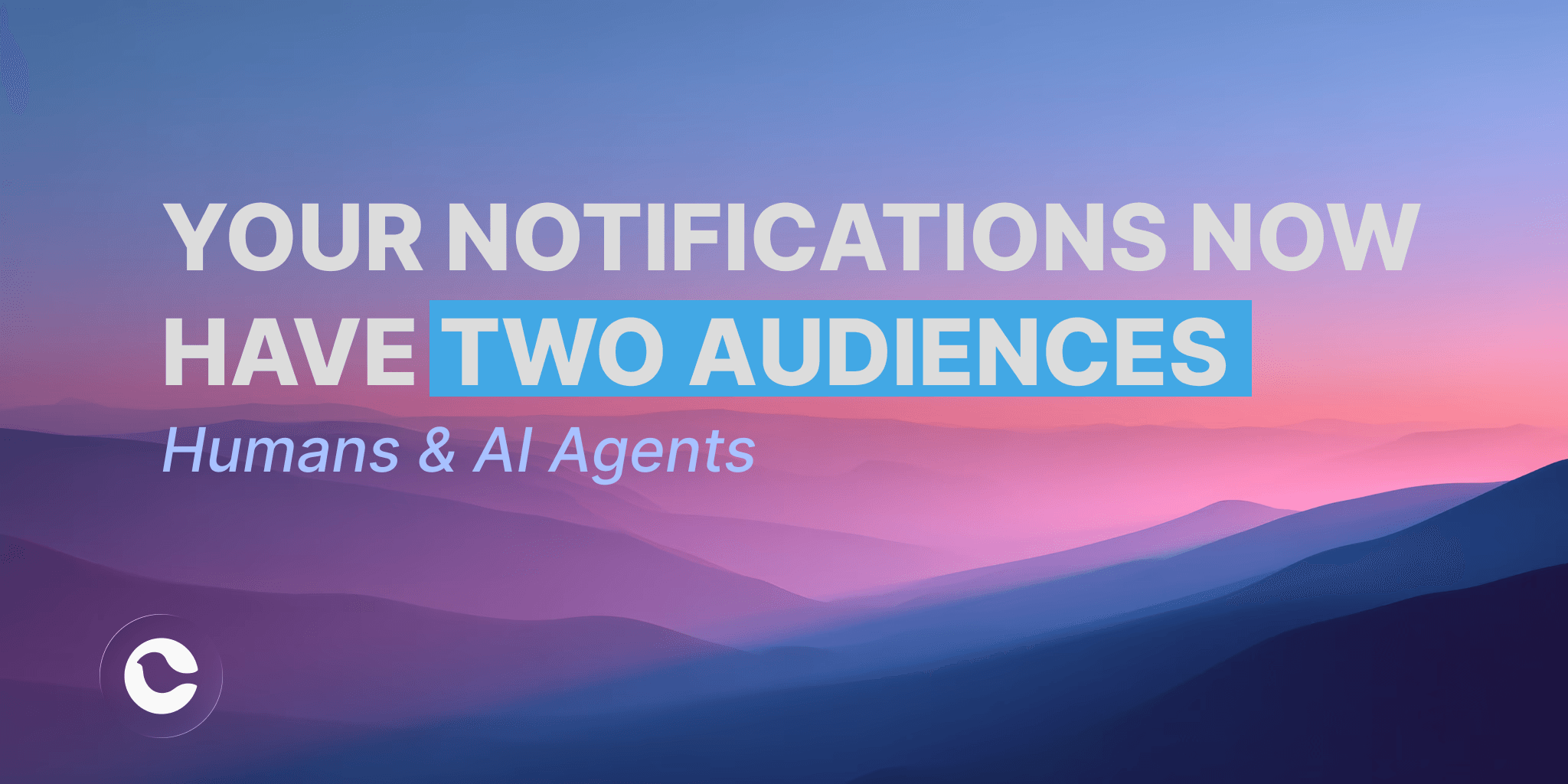How to Use a Push API to Send Notifications from your Mobile App
Oleksii Klochai
November 08, 2023

Perhaps because we are constantly swamped with push notifications, they can go overlooked as a messaging category. They are nevertheless an important medium of modern communication, and a more diverse one than you might think.
Push notifications initialize interactions between a recipient and a sender, in an era of communication where response times are measured in seconds. Such high-frequency information requires effective distillation to remain efficient and to avoid flooding recipients with noise.
Users don’t have to request push notifications and don’t have to sort through an archive to view them. Because push notifications propagate even if the associated app isn’t open, they are durable to intermittent usage of your app.
This makes push notifications a preferred way to inform a user about changes to a system, to announce new messages or in-app content, or to re-engage in an abandoned process. In comparison with channels such as email, SMS, or social media, push notifications allow you to pinpoint a user’s attention to a specific event, without overwhelming them.
This article will dive into the topic of push notifications and will explain how to use Courier’s push API to deliver simple, one-time push notifications to Android or iOS systems. Web notifications are also supported by a different Courier product (toast messages), which is not covered here.
Different flavors of push
Push messages are a surprisingly wide-ranging topic. As a software developer, there are contexts where you need to provide users with small pieces of unsolicited information – whether on desktop or mobile, in a browser or in an app, brief contact from out-of-focus programs are vital for program function.
Desktop
A top-down notification box on an Ubuntu desktop __A top-down notification box on an Ubuntu desktop
Commercial computer systems today are capable of running dozens of programs simultaneously, but rarely do users have visual space on their device to view more than a couple at once. Push notifications in a desktop help visually hidden processes claim user attention for events that require their input.
Web browser

Test your own browser notifications at Ben Kennish’s website.
Similarly to desktop, the proliferation of tab-capable modern browsers has necessitated browser push notifications. Information about audio media from a background tab, new content in an auto-refreshing page, or the completion of a file download are all intermittent events that often require user response, and are therefore announced by push.
Mobile

A typical Android lock screen
Mobile push notifications are very different from desktop and browser pushes. For one thing, mobile devices are generally used more intermittently than computers or tablets. This means that push notifications are important, asynchronous updates that keep users informed.
Additionally, mobile devices have a much smaller visual field for information. That makes push notifications more common, but also means there is more competition for attention among all the push notifications.
Mobile push notifications are therefore extremely important to the usage of a mobile device. Unlike other types of push notification, mobile pushes have a separate pipeline for generating, queuing, and distributing individual pushes. The software and servers that deliver these pushes are operated by push providers.
Keep in mind that mobile push notifications are NOT the same as an in-app notification. In-app notifications, such as confirmation messages after a user changes important settings, occur inside the app, in a context where user attention can already be assumed, and are not queued or distributed using the same push notification network as a mobile push. To learn more about in-app notifications, see our article highlighting the use of toast messages using Courier.
Pick a push provider, don’t use their push API
Mobile push notifications are sent to users through a specific provider’s service. Like a mobile network, that provider facilitates collecting and distributing the notifications. (Unlike a mobile network, these providers’ dispatches are broadcast not by cell towers, but by internet servers.)
Each provider has a number of advantages and disadvantages. Some providers – like Firebase Cloud Messaging – might already be ready to integrate with your existing customer tools. Others, like Apple Push Notification Service, are well adapted to a particular mobile development platform. Providers like OneSignal might offer support for your entire suite of customer messaging channels.
Courier’s value add
Courier is not a push provider itself, so why bring Courier into the mix? Although most push services are reliable utilities with their own push API, they really only handle the message delivery. Metrics about the messages, including their conversion rates, and advanced controls for user preferences are still the domain of the back-end engineer.
Courier supports and extends the existing API of your push provider, while delivering incredible customization options. It enables you to match customer details to the message, handle messaging across channels, and create extensive logging and error handling for when phones can’t get connectivity. Courier also integrates well with adjacent tools in your stack – including customer data platforms like RudderStack and Segment, and cloud observability platforms like Datadog.
Whatever mobile push use case your marketing team might dream up, Courier can deliver. Courier supports the deployment of many push providers. Our long-term support and the peace of mind we offer will help you get on track while building up your own service.
Bringing Courier online
Firebase Cloud Messenger is a common push notification service that supports easy Android and iOS development. Our docs outline a simple but comprehensive process for testing out pushes via Courier in Firebase Cloud Messenger.
Delivering pushes with care
With Courier, you have out-of-the-box support for your marketing strategy. What’s more, you have that same support for channels such as SMS, email, Slack, or MS Teams.
If you want to learn more about our support for your push services, you can read through the documentation for our push notification API, request a demo, or sign up to the app, where you can send 10,000 messages per month, for free.
Let us keep you in touch with your users!
Similar resources

Notification Observability: How to Monitor Delivery, Engagement, and Provider Health
Notification observability is the practice of monitoring notification delivery, engagement, and provider health using the same tools and discipline you apply to the rest of your application infrastructure. It means tracking whether messages are delivered, opened, and acted on across email, SMS, push, and in-app channels, then surfacing that data in dashboards alongside your other application metrics. Key metrics include delivery rate by channel, bounce and failure rates, provider latency, open rate trends, and click-through rates by template. Teams can build notification observability through DIY webhook handlers that pipe provider events to Datadog or Prometheus, log aggregation from application send logs, or notification platforms with built-in observability integrations. This matters most for multi-channel systems, business-critical notifications like password resets and payment confirmations, and teams using multiple providers with fallback routing.
By Kyle Seyler
January 15, 2026

Multichannel Notification Template Management: Version Control, Migration, and Cross-Channel Previews
AI agents are reshaping how products communicate with users. By 2026, 40% of enterprise applications will embed agents that need to send notifications across email, SMS, push, Slack, Teams, and in-app channels autonomously. Managing templates across all these channels with Git-based workflows doesn't scale. This guide covers how teams handle version control and rollback for multichannel templates, which platforms enable designer collaboration without deploys, whether Figma design systems can connect to notification builders, how to migrate templates using APIs and MCP-assisted workflows, how to preview messages across channels side-by-side, open-source options that integrate with SendGrid, Twilio, Firebase, and Slack, and how to localize content from one dashboard. Platforms covered include Courier, Novu, Knock, SuprSend, Dyspatch, Email Love, and React Email, with honest assessments of limitations for each.
By Kyle Seyler
January 14, 2026

Your Notifications Now Have Two Audiences: Humans and AI Agents
AI agents are now filtering, summarizing, and acting on notifications before users ever see them. In late 2024, Anthropic released the Model Context Protocol. By mid-2025, MCP had become the connective tissue for AI agents that take actions on behalf of users. Google followed with A2A. Agentic browsers like Perplexity Comet and Opera Neon started treating the web as something to navigate programmatically. Your notification strategy needs to account for machine interpretation, not just human attention.
By Kyle Seyler
January 05, 2026
© 2026 Courier. All rights reserved.